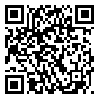Volume 17, Issue 6 (2015)
JAST 2015, 17(6): 1551-1558 |
Back to browse issues page
Download citation:
BibTeX | RIS | EndNote | Medlars | ProCite | Reference Manager | RefWorks
Send citation to:



BibTeX | RIS | EndNote | Medlars | ProCite | Reference Manager | RefWorks
Send citation to:
Ma W H, Shao Y Q, Zhao H T, Tian S H, Meng J, Yang S S, et al . Using Bee Attractants to Improve Honeybee Foraging on Dangshan Pear (Pyrus communis L.). JAST 2015; 17 (6) :1551-1558
URL: http://jast.modares.ac.ir/article-23-3593-en.html
URL: http://jast.modares.ac.ir/article-23-3593-en.html
W. H. Ma1  , Y. Q. Shao2
, Y. Q. Shao2  , H. T. Zhao1
, H. T. Zhao1  , S. H. Tian1
, S. H. Tian1  , J. Meng1
, J. Meng1  , S. S. Yang1
, S. S. Yang1  , Y. L. Du1
, Y. L. Du1  , Y. S. Jiang
, Y. S. Jiang  1
1
 , Y. Q. Shao2
, Y. Q. Shao2  , H. T. Zhao1
, H. T. Zhao1  , S. H. Tian1
, S. H. Tian1  , J. Meng1
, J. Meng1  , S. S. Yang1
, S. S. Yang1  , Y. L. Du1
, Y. L. Du1  , Y. S. Jiang
, Y. S. Jiang  1
1
1- College of Animal Science and Technology, Shanxi Agricultural University, Taigu Shanxi, 030801, People's Republic of China.
2- Institute of Horticulture, Shanxi Academy of Agricultural Sciences, Taiyuan Shanxi, 030031, People's Republic of China.
2- Institute of Horticulture, Shanxi Academy of Agricultural Sciences, Taiyuan Shanxi, 030031, People's Republic of China.
Abstract: (9204 Views)
The fruit set rate and yield of pear are commonly low due to insufficient pollination, as the species is unattractive to honeybees. To improve honeybee foraging behavior for the pollination of Dangshan pear (Pyrus bretschneideri cv. dangshansuli), nine methods were used to attract bees. A control treatment of colonies was fed with normal sugar syrup, while six other treatments were fed using sugar syrup mixed with Pear syrup, Gallic acid, Arginine (Arg), Lysine (Lys), Methionine (Met), or 8-Br-cGMP; plates containing Juvenile Hormone analog ZR-512, Brood Pheromone (BP), and Queen Mandibular Gland Pheromone (QMP) were placed inside the hives of another three treatments. Pollination efficacy was compared using the pollen load weight and quantity of foraging bees. The peak time of pear pollen gathering was 10:00–11:00 regardless of treatment. The pear pollen load weight per day was increased by all nine treatments. Pear pollen load weight per day was 49.11 g in the control. The QMP treatment yielded the heaviest pear pollen load weight per day (77.56 g), followed by the 8-Br-cGMP (64.45 g) and BP treatments (64.20 g). The percentages of pear pollen weight and quantity in the total pollen per day were both highest in the BP treatment (80.23%, 87.27%), followed by those in the QMP (79.32%, 86.74%) and Lys treatments (76.25%, 85.81%). In conclusion, BP was the most effective treatment for improving honeybee pollination behavior in the pear orchard, while other treatments, including Arg, Lys, 8-Br-cGMP, ZR-512, and QMP, could also be useful.
Article Type: Research Paper |
Subject:
Agricultural Entomology
Received: 2014/03/25 | Accepted: 2014/12/8 | Published: 2015/11/1
Received: 2014/03/25 | Accepted: 2014/12/8 | Published: 2015/11/1
| Rights and permissions | |
 |
This work is licensed under a Creative Commons Attribution-NonCommercial 4.0 International License. |






